Initially proposed in Brazil’s Rio de Janeiro at the 1992 Earth Summit, World Oceans Day was established as an official United Nations observance in 2008. Since then, June 8 has served as a global call to recognize the critical role oceans play in sustaining life and the urgent need to protect them. Since then, individuals, communities, and classrooms around the world have celebrated the day by learning more about the beautiful role the oceans play in our lives. But most importantly, they have marked the occasion by taking action to ensure these, our largest bodies of water, are healthy for years to come. For educators, this is the perfect opportunity to help students see the ocean's story as it truly is; intertwined with their own. By connecting young minds to the vast systems of the oceans, we can inspire curiosity, stewardship, and a more profound sense of global responsibility. So, what is the ocean's role in our lives?
The Importance of the Oceans
You may not live anywhere near the coast. In fact, you may not have had the pleasure of seeing the ocean with your own eyes. Yet, it touches every aspect of your life. You see, the world's oceans are much more than vast bodies of water full of alienesque creatures and salty water; they are intricate systems that connect every continent and climate on the planet. Whether you step out to get some fresh air, run inside to put on a sweater on an unexpectedly chilly day, or enjoy a meal at your favorite restaurant, the ocean's influence is forever persistent. This direct connection exists because the ocean plays a vital role in everything from regulating weather patterns and absorbing greenhouse gases to providing sanctuary for abundant aquatic life. As a result, any change in the oceans will directly impact the weather, food availability, and numerous other aspects of our daily lives.
Oceans and Air Quality
The Earth's delicate environmental balance relies significantly on the oceans. Taking up a whopping 70% of our blue planet's surface, they are critical to providing the oxygen we need to breathe. In fact, without the photosynthesis of oceanic plankton and drifting plants and algae, an estimated 50% of the world's oxygen would be lost. On the other hand, our oceans act as a carbon sink, absorbing a third of all carbon dioxide emissions.
Oceans and Climate
By now, you've likely heard that the world's glaciers are melting. And while you may have never stood near one in person, glaciers play a vital role in keeping the Earth's climate stable. These massive ice formations reflect sunlight back into space, helping to cool the planet. As they melt, not only do sea levels rise, but the balance of cold freshwater entering the oceans also shifts. This phenomenon affects ocean currents, which are responsible for transporting warm and cold water around the globe. When glaciers and oceans work in harmony, they help regulate global temperatures and maintain the climate patterns we depend on. However, as glaciers shrink, this balance is disrupted, resulting in more extreme weather and less predictable climate conditions worldwide.
Even if your daily routine feels far removed from the ocean, marine life might be closer than you think. Many everyday products contain ingredients sourced from the sea. For example, algae-derived compounds are used in a wide range of products, including toothpaste, cosmetics, ice cream, and salad dressing. Certain medications, including those used in cancer treatments, have been developed using compounds found in marine organisms. The ocean is also a frontier for scientific discovery, where researchers continue to find new species and chemical compounds that could unlock future technologies and cures. By helping students recognize these hidden connections, we can broaden their appreciation for ocean conservation beyond the beach.
As an educator, you also have an important role to play in helping the environment. Through simple, classroom-friendly activities, you can help students make a positive impact on ocean health. A simple way to start is by teaching students about different types of plastics, helping them start their own recycling program at school, and encouraging them to bring reusable lunch containers and water bottles. All of which helps limit the amount of plastic that ends up in our waterways.
Additionally, saving energy in the classroom by turning off lights or unplugging devices when not can be a useful tool, as reducing waste and electricity use helps lower carbon emissions that contribute to ocean acidification and climate change. Even organizing a simple classroom or campus cleanup can be a powerful hands-on activity that demonstrates to students how quickly even inland litter can travel through storm drains and rivers to reach the sea. Finally, weaving ocean literacy into science or geography lessons by exploring how oceans influence climate, ecosystems, and global systems can deepen their understanding of the ocean’s vital role in their everyday lives.
Want to keep the learning going? Visit Watt Watchers of Texas for more blog posts, classroom resources, and fun energy-related activities that help students connect the dots between daily choices and environmental health. World Oceans Day is just one reminder that our planet’s biggest challenges are also its biggest classrooms. Let’s dive in together!
Bees have been buzzing across our planet for around 120 million years, evolving into over 20,000 species now found on every continent, with only a single exception, Antarctica. From the tiny, often-overlooked sweat bee to the familiar and beloved bumblebee, these remarkable pollinators have adapted to more environments than most people think. Nowadays, you can find our bee friends everywhere, from forests and deserts to backyard gardens and megacities. Their ability to thrive in such diverse habitats has made bees essential players in the health of ecosystems worldwide, supporting both wild plant life and agricultural crops through pollination.
Honeybees, arguably the most well-known pollinators, were originally native to Europe, Asia, and Africa but have since spread globally through human domestication and cultivation. These bees are essential to our food system, pollinating a vast array of crops we consume daily. Fruits and vegetables such as almonds, apples, blueberries, cucumbers, and pumpkins all depend on pollination to thrive. In fact, the global economic value of bee pollination is estimated in the hundreds of billions of dollars. Without pollinators like bees, farmers would struggle to grow many of the foods we rely on, leading to reduced crop yields, higher prices, and far less variety in our grocery stores. In this way, bees serve as silent but vital partners in feeding the world.
However, honeybees aren't the only pollinators making this possible. Wild bees—including mason bees, carpenter bees, and leafcutter bees—play an equally important and often underappreciated role. In some cases, they're even more efficient pollinators than honeybees, thanks to their unique behaviors, body structures, and plant-specific adaptations. For example, bumblebees are capable of "buzz pollination," a method that involves vibrating their bodies to release pollen from certain flowers—a technique crucial for crops like tomatoes and peppers. These diverse wild bee species expand and strengthen the pollination network that supports both natural ecosystems and modern agriculture.
The global health of bee populations presents a complex and evolving picture, marked by both growing concern and increased efforts to safeguard their future. Some of the primary threats standing before modern bee populations include pests, parasites, disease and climate change.These factors place intense pressure on bee populations, pushing some species, like the rusty patched bumblebee, onto endangered species lists.
Despite the challenges facing bee populations, there are promising signs of progress in both scientific research and conservation efforts. Advances in bee health research have led to the development of new vaccines aimed at combating common bee pathogens, such as American foulbrood, offering a potential safeguard against some of the most destructive bee diseases. Beyond the lab, efforts like urban beekeeping is gaining traction as cities around the globe adopt rooftop hives as part of broader sustainability and biodiversity initiatives. These urban efforts not only support local ecosystems but also help raise awareness about the importance of pollinators in densely populated areas.
Teaching children about bees is more than just a biology lesson—it's a meaningful way to cultivate lifelong environmental awareness and a sense of responsibility. When students learn that bees are responsible for the apples in their lunchboxes and the pumpkins in their autumn decorations, they begin to understand the profound connections between their everyday lives and the natural world. This awareness fosters not only curiosity but also early habits of scientific thinking and environmental stewardship.
Integrating bee-related topics into science lessons, literacy activities, or even creative art projects gives students hands-on opportunities to explore real-world energy and environmental concepts like biodiversity, sustainability, and conservation in ways that are tangible and age-appropriate. The challenges bees face, from declining native populations to the impacts of climate change, offer a powerful and accessible lens through which students can also begin to explore broader environmental themes such as habitat loss, urban ecology, and energy systems.
This World Bee Day, let it be more than just a celebration; let it be a call to action. Whether you plant a few native flowers, reduce your use of pesticides, or introduce your students to the fascinating world of pollinators, every small effort counts. By engaging and educating the next generation, we help ensure a future where bees and the ecosystems they support continue to flourish.Want to explore more about energy, the environment, and how to bring these important topics into your classroom? Visit Watt Watchers of Texas to discover a variety of insightful articles, hands-on lessons, and engaging activities designed especially for educators like you!
It’s hard to believe how quickly 2025 is moving along—and with the 55th anniversary of Earth Day fast approaching on April 22, this moment calls for more than just reflection. This green holiday has always served as a global reminder to care for our planet, however the year 2025 holds special significance in the fight against climate change. This is because 2025 marks a pivotal checkpoint for global climate action, as outlined in the United Nations' Paris Agreement. Countries around the world are expected to have reached critical interim targets for reducing greenhouse gas emissions by 2025, paving the way toward the ultimate goal of net-zero emissions by mid-century. With rising temperatures and shifting weather patterns already affecting millions, 2025 is not just another year—it is a decisive moment for bold, collective action toward a more sustainable and resilient future.
The good news is that we have the tools, knowledge, and creativity to make a real difference. By learning about the different ways we use energy, different energy resources, and most importantly how to reduce our energy consumption, we can empower students, families, and communities to take part in positive change. This year’s Earth Day theme, “Our Power, Our Planet,” encourages people of all ages to come together and support renewable energy as a vital solution to climate challenges.
This year's call to action aims to triple the world’s use of renewable energy by 2030. It's a mission that encourages everyone—from companies and organizations to schools and families—to unite in support of clean energy solutions that reduce pollution and protect natural ecosystems. So what exactly is renewable energy, and how does it affect our daily lives here in Texas?
Put simply, renewable energy comes from natural sources that are constantly replenished—such as sunlight, wind, moving water, and geothermal heat. Unlike fossil fuels, which take millions of years to form and emit large amounts of carbon dioxide when burned, renewable energy generates power while avoiding or significantly reducing the amount of harmful greenhouse gases released into the atmosphere. Wind and solar energy are especially important in the effort to combat climate change because they produce electricity without combustion, helping to drastically cut carbon emissions and improve air quality. In Texas, the combination of vast open plains and abundant sunshine has made the state a national leader in renewable energy production. As of 2024, Texas ranks first in the U.S. for wind energy capacity and is rapidly expanding its solar infrastructure, thanks to favorable land conditions, and strong investment in clean energy technology. These resources not only reduce pollution and conserve the planet’s natural reserves but also create sustainable, homegrown energy solutions that are both innovative and reliable. With its unique geographic and economic advantages, Texas is in a prime position to lead the transition toward a cleaner, greener future.
This Earth Day, teachers, parents, and educators have a powerful opportunity to come together and spark meaningful change in their schools and communities. By tapping into Watt Watchers' free, TEKS-aligned resources, families and educators can partner on energy-saving initiatives that engage students in real-world learning about energy and sustainability. A great place to start is by implementing the Watt Watchers student patrol program, which empowers students to take an active role in conserving resources.
In San Antonio, the Royal Ridge Elementary School Green Team — an enthusiastic group of 4th and 5th graders — recently welcomed the Watt Watchers team for an inspiring visit. These young conservation leaders proudly gave a tour of their campus and invited us to join one of their student patrols in action. Guided by the Watt Watchers program, the Green Team brainstormed new strategies for reducing energy use, monitored classrooms for unnecessary electricity consumption, and collected recycling from teachers’ rooms. They even designed custom conservation badges to promote awareness and encourage others to join their mission. Their creativity and commitment show just how impactful student-led sustainability efforts can be.
The Watt Watchers program empowers students to become energy champions both at school and at home, turning Earth Day into a powerful starting point for long-term environmental stewardship. When educators and families join forces, even small daily actions—like turning off unused lights or unplugging electronics—can create a meaningful and lasting impact across Texas and beyond. Earth Day is more than a date on the calendar—it’s a mindset that encourages year-round awareness and action. Whether you're a parent, teacher, or student, you play a vital role in building a cleaner, more sustainable future. Let this Earth Day be the springboard for ongoing energy education and everyday conservation. Together, we can harness our power to protect our planet.
Watt Watchers would like to extend a heartfelt thank you to Ms. Mandy Flowers, 4th grade science teacher, the Royal Ridge school administration, and the Green Team for their support and hospitality. It's clear that the Green Team is making a real difference — and proving that sustainability starts young.
Looking for ways to bring energy education into your classroom or home? Explore our free resources and activities to help young learners understand energy, conservation, and their role in protecting the Earth.
Have you ever wondered what the most consumed resource on the planet is? Water, one of our most valuable natural resources, tops the list. Yet, despite its essential role in our lives, it is often taken for granted. In the United States, total water withdrawals reached approximately 322 billion gallons per day in 2015, making it one of the highest-consuming nations in the world. So where does all of this water go? Various sectors rely on this vital resource, with thermoelectric power (41%), irrigation (37%), and public supply (12%) being the largest consumers in the United States. Taking a closer look we can see that two states stand out above the rest in their water use, California and Texas.
The Lone Star state accounted for approximately 4.95 trillion gallons of water in 2022 alone. These numbers reflect the state's strong agricultural and urban demands with the majority of Texas' water usage going to irrigation (50%) and municipal needs (34%). With per capita residential water use averaging 82 gallons per day in the U.S., and increasing concerns over droughts and resource sustainability, managing water consumption has never been more urgent. Texas, with its vast size, arid climate, and rapidly growing population, faces unique challenges in securing a reliable water supply. By examining the historical, technological, and cultural factors that shape water use in Texas and across the nation, we can develop smarter policies and practices that promote long-term sustainability.
Texas, characterized by its diverse landscape, has a unique and complex relationship with water resources. Early inhabitants, like most communities at the time, depended on wells, cisterns, and rivers to access drinking water. However, over the years, significant infrastructure projects have been undertaken to enhance water storage and distribution. Notably, the construction of reservoirs such as Lake Travis, which aimed to manage the Colorado River's flow, providing both flood control and a reliable water supply for Central Texas. Additionally, the Edwards Aquifer became a crucial groundwater source, especially for those living in the San Antonio area. Today, Texas utilizes a diverse water supply portfolio, combining surface water, groundwater, and desalination plants to meet the demands of its growing population.
Technology and Innovation
The United States has developed sophisticated water access technologies, including dams, reservoirs, desalination plants, and wastewater treatment facilities. In Texas, advancements such as rainwater harvesting systems and smart irrigation have helped improve efficiency.
However, the growing demand for water has also put pressure on these systems. As climate change leads to more extreme weather patterns, including droughts and heatwaves, Texas has had to implement water conservation measures and seek innovative solutions like aquifer storage and recovery projects.
Water is a finite resource, and responsible consumption is vital for future generations. By understanding the history of water access, the impact of overuse, and practical ways to reduce consumption, Texans—and all Americans—can take steps toward a more sustainable future. Monitoring household water use through a water meter is a simple yet powerful tool that can help each of us play a role in conservation efforts.
The future of water in Texas and beyond depends on our actions today. Let’s commit to using water wisely and ensuring that this vital resource remains available for generations to come. Complete the following activity to find out how much water you use at home! Also, don’t forget to check out more exciting energy activities on the Watt Watchers of Texas.
Activity Overview: You can learn how much water your house uses by reading your home meter. The Meter Reading activity will help you learn how to read a meter. In this activity, we are going to learn how to measure how many minutes of water you are using and find ways that you can conserve. Time: This activity will take place over the course of two weeks. The first week, you will measure your consumption. In the second week you'll compare your consumption to week 1. Use this worksheet for this activity: Resources Austin Water Water Use Calculator |
Texas has been a leading player in energy since the discovery of oil at Spindletop on January 10, 1901. The legendary 100 feet of oil that sprung into the air that day would mark the beginning of a vibrant industrial age. Propelled further with the help of vast gas reserves and the eventual incorporation of renewable resources, Texas energy has allowed the state to evolve into a beacon for technological advancement, economic development, and globalization, whose influence continues strong today. But, how exactly has Texas reshaped the energy industry?
Maintaining your status as a powerhouse in the energy sector can be a tricky task. The Lone Star State has managed to be successful through a combination of factors, including its access to traditional energy sources and its commitment to the development of clean energy initiatives. Currently leading the way in the country's largest wind power capacity and leveraging its access to solar energy, Texas has proved to be an unexpected trailblazer for green energy. The ability to mix and match in this way has enabled the state to achieve significant industry advancements at an astounding rate.
Geothermal energy is a renewable, low-carbon alternative to traditional energy sources like oil and gas. It works by harnessing the Earth's natural heat through the extraction of hot fluids or steam from deep underground reservoirs. These heated fluids are then brought to the ground surface, where they are used to generate steam to drive turbines, which, in turn, produce electricity.
The Earth's core is an astounding 6,000 °C (10,832 °F). To put things in perspective, that's the same temperature as the surface of the sun! This largely untapped energy resource has the potential to be a huge player in the future of sustainable energy. Due to the expansive existing oil and gas infrastructure in Texas, the use of Hybrid Geothermal Systems or Multi-System Hybrids could be the answer to the state's future sustainable energy production strategies.
Texas has the potential to lead the way in hydrogen production technologies. With energy experts in the state working night and day to explore its potential as a clean energy source, it’s no wonder the Lone Star state has managed to take such large strides in recent years. So, what is hydrogen energy? Hydrogen energy is derived from hydrogen molecules, which carry almost three times the energy of gasoline or diesel by weight. These molecules, while abundant in the universe, are actually quite scarce in our atmosphere. Because of this, hydrogen must be produced from existing substances like water. The most common method, called water electrolysis, uses electricity to split water into hydrogen and oxygen. Once the hydrogen has been isolated, its chemical energy can be used through fuel cells. What allows Hydrogen energy to be truly carbon emission-free is the use of renewable energy like wind or solar to produce the electricity needed for this process. As hydrogen gains traction as a versatile fuel, Texas's efforts highlight its role as a trailblazer in shaping a sustainable energy future.
The energy industry's influence extends beyond energy production and natural resources. It's a sector that has shaped the state through everything from its transportation networks to agriculture and manufacturing. Even the burgeoning tech industry in cities like Austin has benefited from the energy sector's growth.
Moreover, the energy industry has spurred educational and research initiatives. Institutions like the University of Texas at Austin, for example, play pivotal roles in training the next generation of engineers and scientists, ensuring that Texas remains at the cutting edge of energy innovation for generations to come.
As Texas continues to navigate the complexities of energy production and consumption, the state stands at a crossroads of tradition and innovation. While oil and gas remain integral to its identity, the rise of renewables signals a shift toward a more sustainable future. This balancing act between legacy industries and emerging technologies ensures that Texas remains a global energy leader. Further development in this sector could underscore Texas' commitment to diversifying its energy portfolio and further establish itself as a global pioneer in the field.
By understanding the interplay between these sectors and their historical and modern impacts, we gain a clearer picture of how energy has shaped—and will continue to shape—the Lone Star State. Complete the following activity to further your understanding of the impact of Texas energy. Also, visit the Watt Watchers of Texas for more fun activities, blogs and don't forget to watch the following video on oil in Texas brought to you by Power Trip: The Story of Energy!
Activity Overview: There's no doubt that oil and gas have had an unmistakable impact on Texas. It is a major industry employing hundreds of thousands of people today, but in the grand scheme of the history of Texas and North America, oil and gas is still an emerging industry. Time: This activity is appropriate for project-based learning. As defined by the Buck Institute for Education, project-based learning (PBL) invites students to “work on a project over an extended period of time – from a week up to a semester – that engages them in solving a real-world problem or answering a complex question. They demonstrate their knowledge and skills by developing a public product or presentation for a real audience.” You could consider scheduling this activity at the beginning of a unit on energy, the environment, or engineering to challenge students to start thinking about different interdisciplinary issues. Alternatively, you could schedule this project as a “final examination” to assess students’ grasp of the material and engagement with the interdisciplinary process. For a different approach, consider scheduling a semester- or year-long project, with routine iterations and presentations. Students’ ideas and engineering designs will improve over the scheduled time as they learn more about the concepts and processes involved. Procedure: For this project, students can work individually or in groups. Allow students to select a topic (or assign students a topic) to investigate relating to the development of the oil and gas industry in Texas. Topics can be historical or contemporary, but should exhibit multi-disciplinary intersection with the development of Texas. You may want to consider booking class time in the library or computer lab for students to research their topics and to compile their research. You could also speak with your librarian or research specialist about a discussion regarding how to find and assess resources relevant to this project as part of a media literacy lesson. Project Statement: Trace the development of major sectors that contributed to the development of Texas. Analyze the effects of scientific development and the impact of significant industries if applicable. Relevant sectors include but are not limited to transportation, oil and gas, manufacturing, agricultural, renewable energy, medical, computer, and aerospace. Evaluation: Evaluate students’ projects according to the following criteria. Excellent project performance for each phase is defined below. Define a Relevant Sector: Student fully understands the project statement and identifies a sector with a meaningful impact to the development of Texas Do Background Research: Student identifies a succinct list of reputable sources that document the background and context of their identified sector and produces a well composed summary of the sector with few to zero errors in grammar, spelling, or citations. Create a Visual: Student creates at least one thematic map, graph, chart, model, or database pertaining to the sector that helps explain at least one point the student is trying to explain in the investigation. |
In a way, a city's traffic acts like a fingerprint. Each city has its own unique set of roads, stops, and spoken and unspoken rules. In the end, the emerging traffic patterns become more than an inconvenient frustration —they reflect how our cities are built and how people interact with them. High traffic levels during peak hours can indicate a city's infrastructure inadequacies. The U.S. Environmental Protection Agency highlights the connection between these factors by analyzing the relationship between transportation-related emissions and environmental and public health concerns.
Poor urban planning often sets the stage for traffic congestion, creating a ripple effect that significantly impacts air quality. Cities designed without efficient transportation systems at the forefront usually result in a significant lack of connectivity and inadequate public transportation options. These conditions lead to a heavy reliance on individual vehicles on a limited number of roads. As you can imagine, high volume, limited space, and little to no alternatives lead to severe congestion and endless stop-and-go traffic during peak hours.
This is where the problem gets more serious. When vehicles are stuck in this stop-and-go traffic or are left idling for prolonged periods, their engines emit more pollutants than when driving smoothly and consistently. These pollutants include particulate matter, carbon monoxide, volatile organic compounds, and nitrogen oxides, which are detrimental not only to our health but also to the health of the environment. Additionally, the heat generated by congestion intensifies the chemical reactions in the atmosphere that produce ground-level ozone, a key component of smog. Not to mention that poorly managed traffic not only exacerbates air quality issues but can also indirectly affect water quality through runoff from congested roadways laden with pollutants. The compounded result is a city with deteriorating air quality, which poses risks to public health, accelerates climate change, and diminishes the overall quality of life in cities.
A city's geography significantly impacts the way traffic emissions and other forms of pollution impact its air and water quality. Let's take a look at Salt Lake City, for example. Located in a basin where temperature inversions frequently trap pollutants near the ground, the impact of vehicle emissions on air quality, particularly during winter, is amplified. In order to combat these adverse effects, the city has made several investments, including promoting public transportation and investing in electric vehicle (EV) infrastructure to limit the public reliance on personal vehicles likely to produce high emissions.
Los Angeles remains a focal point for air quality challenges, especially regarding ozone levels. Despite some improvements and attempts to alleviate traffic in the area, the city's infamous reputation for having some of the most dense traffic in the country continues. So far, strategies have included adopting regulatory measures and policies on industrial pollution and updated urban planning.
In Phoenix, the rapid pace of urban sprawl has led to increased vehicle use and a growing urban heat island effect. This combination exacerbates particulate matter (PM) and ozone pollution, particularly during summer. The city is now prioritizing green infrastructure and shaded public spaces in an effort to limit rising temperatures and improve air quality.
Problem Solving with Urban Planning
Tree-lined streets, urban wetlands, and permeable pavements are already a reality in cities worldwide. With new technology and innovation, the cities of the future will not only have improved air quality and managed stormwater runoff, but they will also be efficient ecosystems where people can thrive without damaging the environment.
Green infrastructure can play a transformative role in our communities. As you examine the challenges of traffic, air quality, and urban design, take into consideration the following questions:
Discover more engaging activities and insightful articles designed to spark curiosity and promote sustainability on The Watt Watchers of Texas! Dive into resources that help you explore energy efficiency, conservation, and environmental stewardship in a fun and interactive way. Start your journey here.
Tire pressure is often overlooked in vehicle maintenance, yet it plays a vital role in safety, energy efficiency, and environmental impact. Properly inflated tires ensure smooth handling, improve gas mileage, and reduce wear and tear. On the other hand, under-inflated tires can lead to decreased fuel efficiency, increased emissions, and even safety risks.
Every vehicle’s tires are designed to operate at an optimal pressure, measured in pounds per square inch (psi). This pressure is determined by manufacturers to balance performance, efficiency, and safety. However, studies show that many vehicles on the road today are not meeting these standards. According to a survey by the National Highway Traffic Safety Administration (NHTSA), 28% of the cars driving on US roads have at least one tire significantly under-inflated. This issue has far-reaching consequences, particularly when it comes to energy efficiency.
When tires are under-inflated, they create more rolling resistance—the friction between the tires and the road. This resistance forces the engine to work harder, consuming more fuel. In fact, for every 1 psi drop in pressure across all four tires, fuel efficiency decreases by about 0.4%. Over time, this can lead to a significant increase in fuel consumption, costing drivers more money and contributing to unnecessary energy waste. Properly inflated tires, on the other hand, can improve gas mileage by up to 3.3%, saving drivers money at the pump while reducing their carbon footprint.
The environmental impact of under-inflated tires is another important consideration, as their inefficiency goes beyond individual vehicles and has far-reaching consequences for the planet. When tires are under-inflated, they create greater rolling resistance, which forces engines to burn more fuel. This increased fuel consumption not only raises costs for drivers but also contributes significantly to higher greenhouse gas emissions. These emissions are a leading cause of climate change, exacerbating issues like global warming, rising sea levels, and extreme weather events.
By simply maintaining proper tire pressure, drivers can reduce their fuel consumption and lower their carbon footprint. Properly inflated tires ensure that vehicles operate more efficiently, requiring less energy to move. This small but impactful action helps conserve non-renewable energy resources, such as oil and gas, which are often used to produce vehicle fuel. Additionally, fewer trips to the gas station mean a reduction in the overall demand for fuel production, refining, and transportation—processes that also generate emissions.
Proper tire maintenance is an accessible and effective way for individuals to contribute to environmental preservation. Whether it’s checking tire pressure monthly, using a tire pressure monitoring system, or ensuring regular vehicle maintenance, these habits promote sustainability and help combat climate change. On a larger scale, widespread adoption of these practices could lead to significant reductions in global energy consumption and emissions, underscoring the importance of this simple yet powerful step in protecting the environment.
Tire pressure may seem like a small detail, but its importance cannot be overstated. Ensuring tires are inflated to their recommended levels benefits drivers, vehicles, and the environment. It’s a simple habit that saves money, enhances safety, and promotes energy efficiency—proving that sometimes, small actions can make a big difference. Ready to take action? Complete the Auto Tire Pressure Activity to see these principles in action and make a real impact. For more engaging blogs and hands-on activities, visit Watt Watchers of Texas and discover more ways to save energy and protect the environment!
| Grade Level: 6, 7, 8 Theme: Transportation Activity Overview: Students will use a tire pressure gauge to determine if the tires are properly inflated. Students will learn how under inflated tires affect gas mileage for a vehicle.Time: 1 hour Materials: tire pressure gauge, clipboards, ribbons, pens, copies of Tire Pressure Worksheet Vocabulary: under-inflated, tire pressure gauge, psi, mpg Background Information: America is driving around on under-inflated tires, according to a recent survey. Under-inflated tires lower gas mileage, wasting millions of dollars each year. Under-inflated tires are also a major safety hazard. Thousands of accidents each year may be caused by poor handling due to under inflated tires. Interesting Facts: * One out of three light trucks and one out of four cars now on the road has a tire that’s significantly under-inflated according to a recent NHSTA survey. * You can improve your gas mileage by 3.3 percent by keeping your tires inflated to the proper pressure. Under-inflated tires can lower gas mileage by 0.4 percent for every 1 psi drop in pressure of all four tires. Properly inflated tires are safer and last longer. * Six percent of light trucks (sport utility vehicles, vans and pickup trucks) are driven with all four of their tires under-inflated by 8 or more psi, compared with 3 percent of passenger cars. Twenty percent of light trucks have two or more tires under -inflated by 8 or more psi, compared with 13 percent of passenger cars. * NHTSA estimates that 49 to 79 deaths and 6,585 to 10,635 injuries could be prevented annually if all vehicles were equipped with tire pressure monitoring systems. In addition, vehicle owners would benefit from better vehicle handling, increased tire life and better fuel economy. Setting the stage: Ask your students if they have ever used a tire gauge, seen their parents add air to a tire, or if they have ever had a flat tire. Discuss gas mileage and factors that may affect it, and reasons why you want better gas mileage (less gas used, less energy usage, less money) Activity 1: So, when was the last time you checked your tire pressure? Take the students out to the parking lot and show them how to check the tire pressure on a car. You may want to ask your high school auto mechanics class to bring a car over and show the students. Have the students fill out the tire pressure chart.Send a tire pressure gauge (about $2 at an auto parts store) home with your students if their parents do not have one. Include the Tire Pressure Worksheet. Have the student research the proper tire pressure for their particular car and record it on the pressure chart. Then they should record the actual tire pressure for each of the tires on the car they researched. In class, total the number of under-inflated tires. Activity 2: Calculate Efficiency Impact Students will calculate the impact on efficiency for a specific example vehicle. Either use the "demo" car from the previous activity or ask students to use the measurements that they recorded from their vehicle at home. To do this, first subtract the actual tire pressure from the recommended pressure provided by the manufacturer. This is the difference in psi from normal pressure. Then multiple the difference in pressure by 0.4. The product is the impact in percent efficiency. For example, if the manufacturer of an American mid-range light SUV recommends 35 psi per tire. The actual tire pressure is 33 psi in each tire. That is a difference of 8 psi (2 psi across 4 tires). The difference in psi times the efficiency impact of 0.4 is 3.2%. Therefore, this vehicle is suffering a 3.2% impact on efficiency. Activity 3: Teacher Tire Check Have the class survey the school parking lot. Students give ribbons and information to teachers the day before the tire check. If teachers want their tire pressures checked they put the ribbon on their dash or rearview mirrors. The class then checks all the marked cars in the lot and leaves a note card under the windshield wiper with the pressures for each tire recorded. Extension: For upper grades or as a club project you may provide an option to the tire check, an “Air Station” you set up after school to get under-inflated tires pumped up. (This will require some air compressors, hose, etc.) Or this could be coordinated with a nearby service station that would permit students to help people get their tires inflated.Handing out driving tips, recommended maintenance tips and mile per gallon calculators at the same time is a good idea. |
When we think about the weather the first thing that comes to mind is the temperature. We take a look at the weather app on our phones and dress according to the number we see. However, anyone from Houston, Miami or any tropical environment knows there's another element that plays a crucial role in how we feel when we go outside⎯ humidity. More specifically, what we are affected by most is something called relative humidity, a term meteorologists use to describe the amount of moisture (water vapor) present in the air relative to the maximum amount the air can hold at a given temperature.
Air has a capacity to hold water vapor. That capacity will change depending on the temperature. Warm air, for example, can hold more moisture, while cold air holds less. Relative humidity is a measurement that compares the actual amount of water vapor in the air to the maximum amount the air could contain. For example, when air has 100% relative humidity, it is fully saturated with moisture—think of a foggy morning when the air feels thick with moisture. At 0% humidity, the air is completely dry.
Relative humidity significantly impacts how we perceive heat. When humidity is high, sweat evaporates more slowly from our skin, making us feel hotter than the actual temperature. On the other hand, in low humidity, sweat evaporates quickly, which cools us down more efficiently.
The instrument used to measure humidity is called a hygrometer. These can range from simple analog devices to more complex digital ones, but one of the most common types, especially in classroom settings, is the sling psychrometer. This device uses two thermometers to measure the relative humidity—one "dry bulb" thermometer and one "wet bulb" thermometer.
Relative humidity plays a vital role in various industries and daily life. In weather forecasting, meteorologists rely on humidity data to predict not only how warm or cold it will feel but also the likelihood of precipitation, fog, or storms. In agriculture, controlling humidity helps farmers ensure optimal growing conditions, as excessive moisture can encourage mold growth while too little can stress crops. In indoor climate control, managing humidity is essential for comfort and health—low humidity can lead to dry skin and respiratory issues, while high humidity fosters mold and allergens. Additionally, in manufacturing, maintaining proper humidity levels is critical in processes like textile production and electronics assembly, where too much or too little moisture can compromise product quality. In the end understanding and measuring relative humidity can have far-reaching impacts, from personal comfort to large-scale industrial operations.
Understanding relative humidity not only helps us appreciate how weather affects our comfort, but it also reveals the deeper connections between climate, technology, and everyday life. Whether it's managing indoor environments, supporting agriculture, or improving industrial processes, knowing how to measure and apply humidity data is an essential skill with real-world impacts. For more exciting activities that explore the science of energy and its effects on our daily lives, visit Watt Watchers of Texas. You'll discover a wealth of interactive energy lessons, fun experiments, and insightful blogs that make learning about energy engaging and practical. Explore now and start your journey towards energy awareness!
Activity Overview: Temperature is the weather metric most obviously associated with human comfort, but humidity is the real key. Humidity is the amount of moisture in the form of water vapor in the air all around us, and it really affects how we feel in the weather. Meteorologists use the term relative humidity, which refers to the ratio of water vapor actually in the air compared to how much water vapor air can hold. In other words, fog is 100% relative humidity; the air contains as much water it can hold. The instrument used to measure relative humidity is the hygrometer. A variety of different digital and analog models exist, but you can build a simple version with your class. Known as the sling psychrometer, this hygrometer takes a measurement with a "wet bulb" thermometer and a "dry bulb" thermometer simultaneously. The difference between the measurements can be interpreted to determine the relative humidity, because evaporation over the wet bulb is directly related to how much moisture is in the air. Materials: 2"x2" cotton gauze rubber band 2 analog thermometers water folder/magazine/piece of cardboard Procedure: First, wet the cotton gauze with water. The gauze should be damp, but not dripping. Cover the bulb of one thermometer with the wet gauze, and secure the gauze to the thermometer with the rubber band. [NOTE: Some thermometers use liquid mercury, which is toxic. Take special care when working with mercury-based thermometers. If you only have these thermometers to work with, consider performing this part of the procedure as the instructor and then only allowing students to observe.] The gauze must be moist with water in order for this activity to work. Place both thermometers next to each other under the same conditions. Use a folder, magazine, or piece of cardboard to blow air over the thermometers. The fanning will not significantly change the temperature of the air, but it will catalyze evaporation, if possible. Wait several minutes for the thermometers to adjust to the temperature of the air. Water will evaporate from the gauze if relative humidity allows, slightly cooling the wet bulb thermometer and allowing a temperature difference to show between the two. Ask students to observe the temperature of the two thermometers and record the results. Then, consult the following chart to interpret the measurements from the thermometer in order to determine the relative humidity of your environment. For example, if the dry-bulb temperature is 24°C and there is a 2°C temperature difference between wet-bulb and dry-bulb temperature, then your environment has 84% relative humidity. |
In today’s fast-paced world, it’s easy to enjoy the benefits of modern technology without thinking about the resources that make it all possible. After all, people don’t need to understand energy to have access to it—so why does energy and water education matter? Why are they so important?
Now more than ever, energy and water literacy are essential. While some parts of the world enjoy seemingly unlimited access to these resources, if we don’t use them responsibly, they could become scarce in the future. In some communities, the effects of wasteful energy practices are already visible. As energy demand increases alongside environmental challenges, understanding how to use the planet's resources wisely is crucial for building a sustainable future.
Education in these areas equips individuals and communities with the knowledge to make informed decisions that benefit both the environment and our quality of life. On August 23, 2024, CPS Energy and Itron, Inc. hosted the Smart Energy Education (SEE) Mixer to celebrate the success of the SEE Scholarship Program and honor the exceptional students who received scholarships. The event brought together students, industry leaders, and educators for a night of networking, knowledge-sharing, and celebration.
The event welcomed several esteemed VIP guests, including:
These industry leaders gathered to recognize the achievements of the scholarship recipients and to highlight the importance of energy and water education. The event was a testament to CPS Energy and Itron, Inc.'s commitment to fostering the next generation of professionals who will drive innovation in sustainability and energy conservation.
The mixer provided students with a unique chance to network with other scholarship recipients, industry leaders, and key figures in the energy sector. Several students even secured internships during the event, marking the start of their careers in the energy field. Dr. Michael E. Webber, a VIP guest, highlighted the importance of the SEE program:
"Having access to the SEE Scholarships has helped many students across the Greater San Antonio area, and we congratulate and thank CPS Energy and Itron, Inc. for their commitment and partnership in supporting energy education. Thanks to this program, students from diverse backgrounds now have the opportunity to learn about energy, sustainability, and conservation, and will use this knowledge in their future careers to create a more resourceful world."
Since 2016, the SEE Scholarship Program has awarded scholarships to more than 50 students, with over $800,000 in funding provided by CPS Energy and Itron, Inc. This initiative, managed by the San Antonio Area Foundation, continues to make a profound impact on the lives of students, empowering them to pursue careers in fields like energy, sustainability, and technology.
The mixer was a celebration of this ongoing success and underscored how education can serve as the foundation for a more sustainable and resourceful future.
For more inspiring stories and updates on the Smart Energy Education program, check out additional blog posts on the Smart Energy Education website!










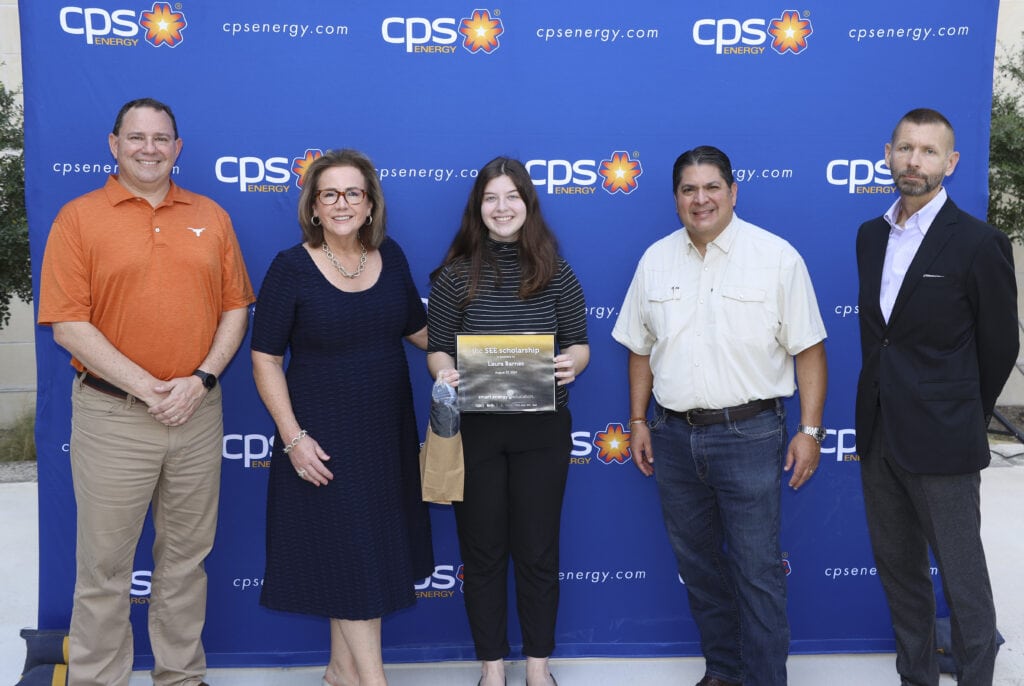

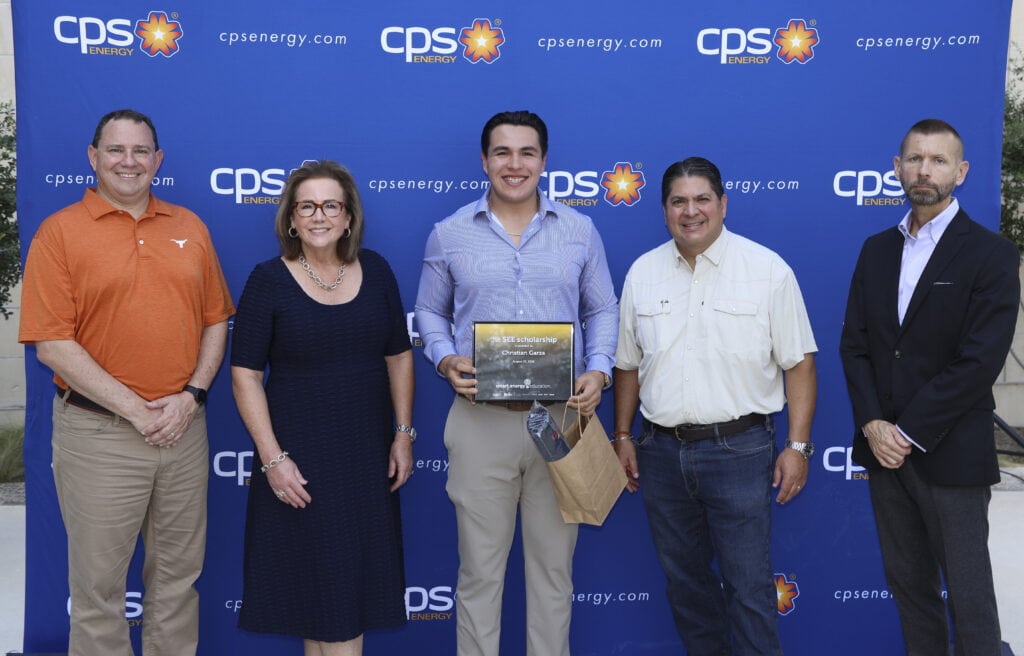
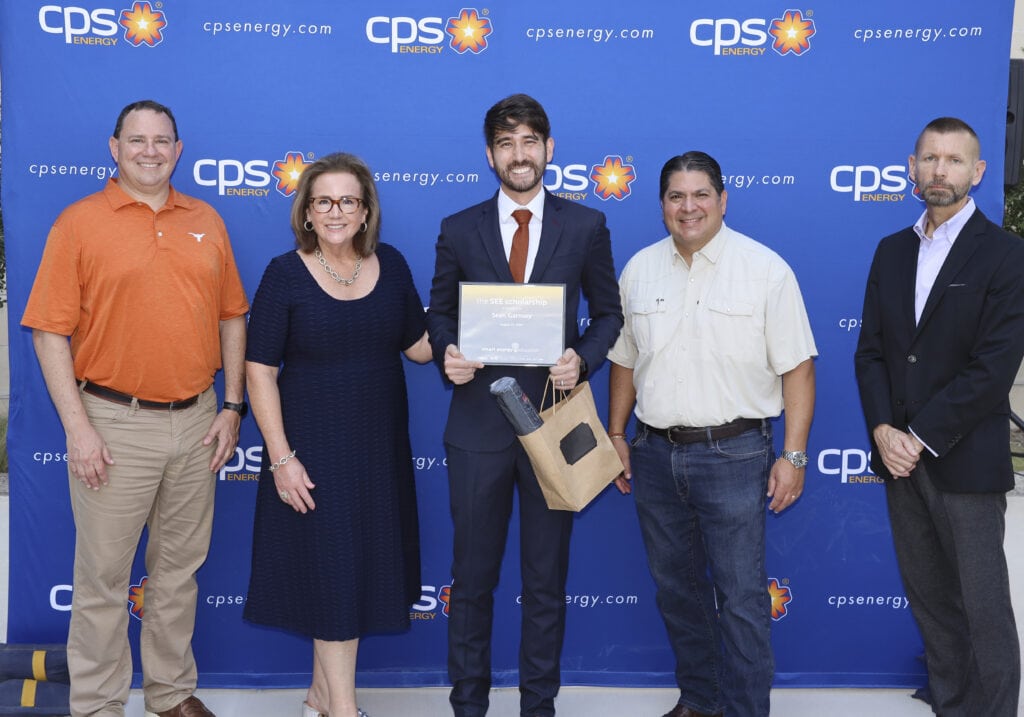
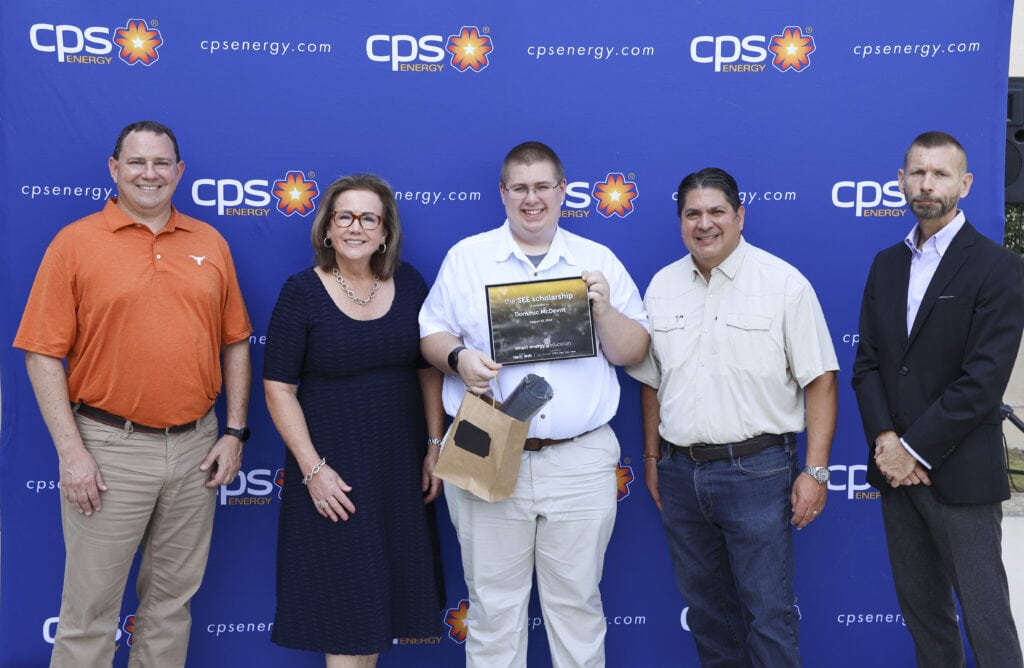
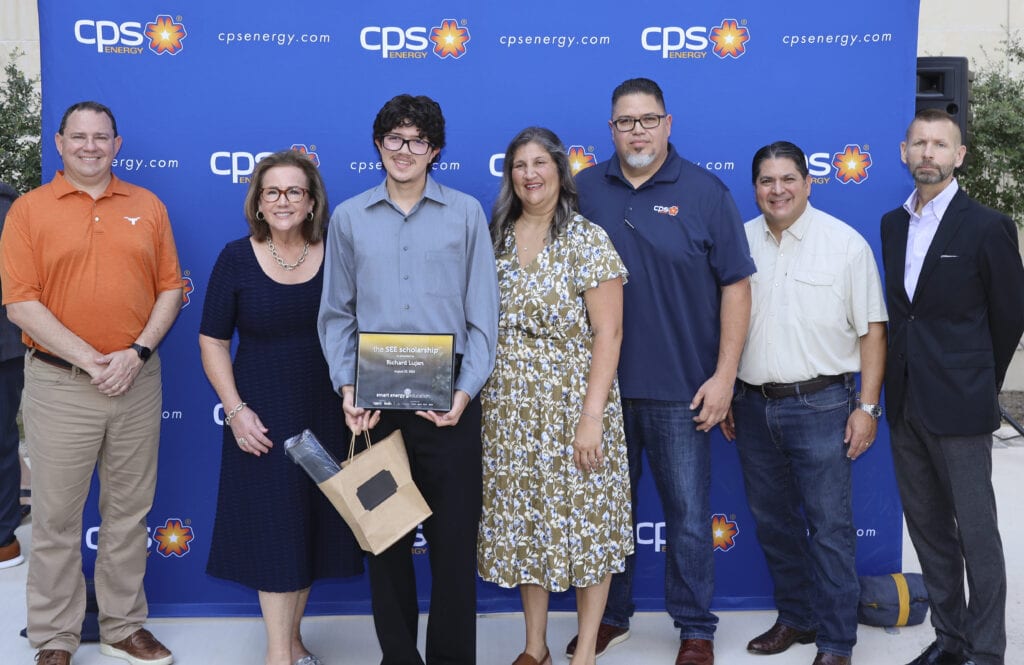
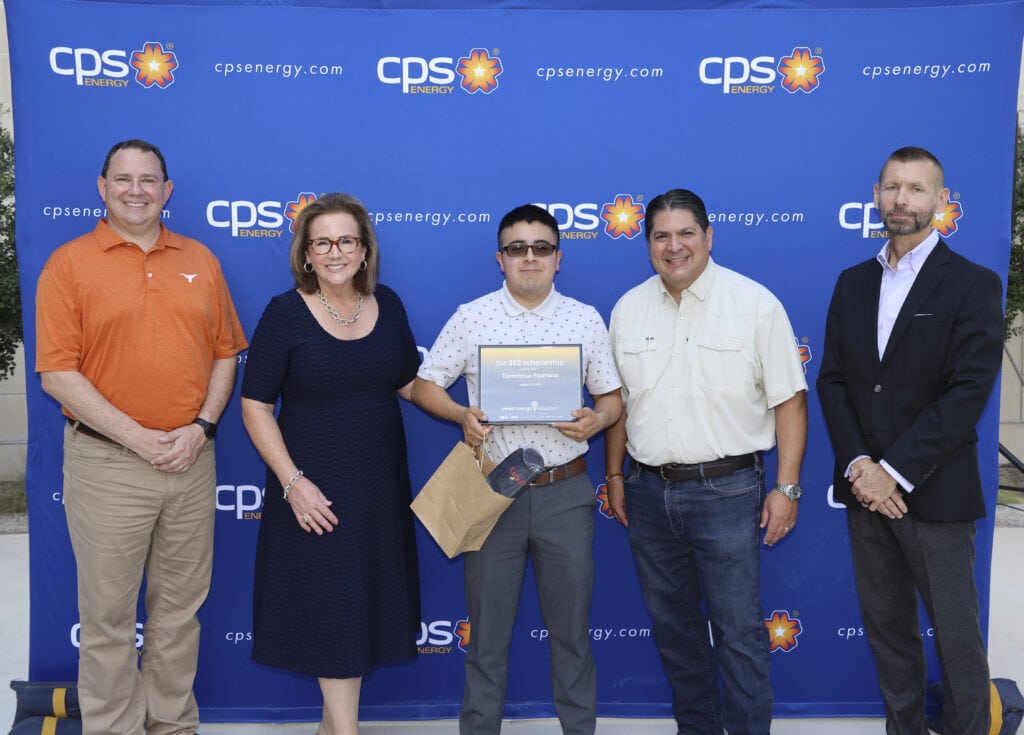
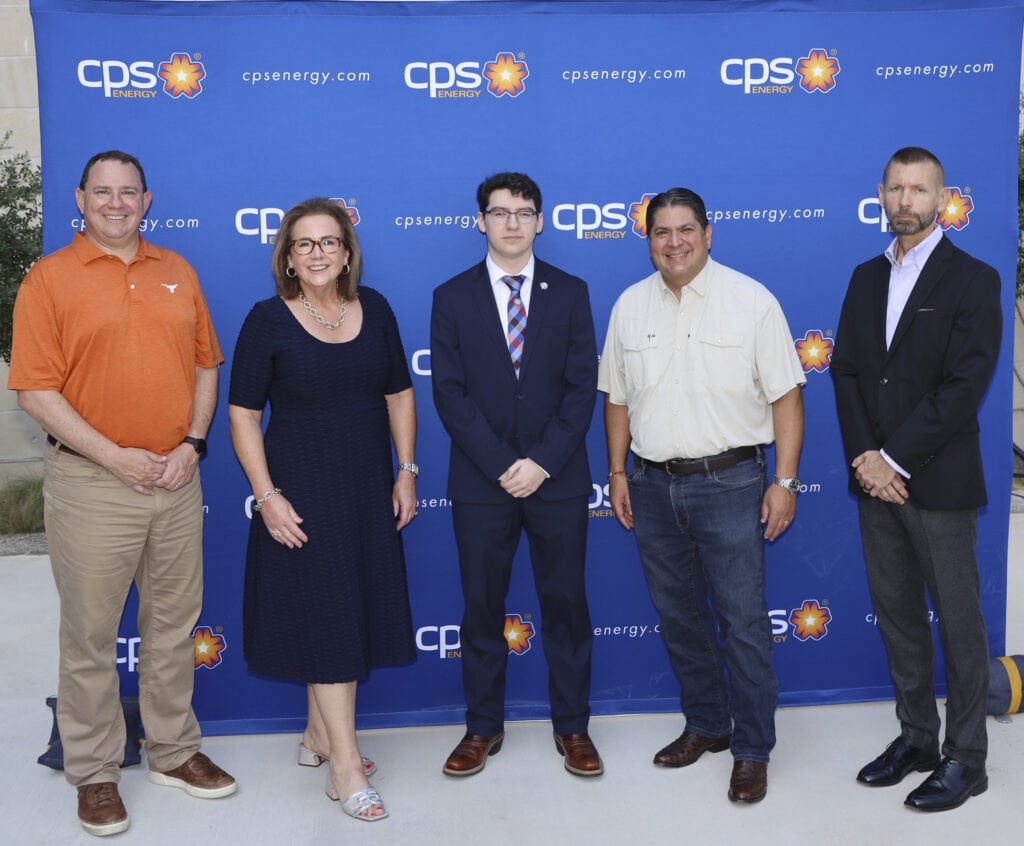
Throughout human history, the pursuit of comfort has been a driving force behind many of our greatest technological advancements, with energy serving as the essential catalyst. From the mastery of fire, to the creation of desalination technology, the desire to control our environment has shaped the way we live. Notably one of the most significant milestones in this journey is the development of air conditioning, a technology that has fundamentally changed the way we experience indoor spaces.
The Historical Quest for Comfort
Humans have always sought ways to adapt their surroundings to better suit their needs. In ancient times, people relied on simple strategies such as building shelters that offered protection from the elements or using natural resources like rivers and caves to stay cool. Even the discovery and control of fire, which may now seem somewhat archaic, was revolutionary for human development, providing warmth in cold climates and enabling humans to settle in areas that were previously uninhabitable.
As people began to settle in different regions and civilizations began to grow and thrive, so did the need for more sophisticated methods of climate control. The Romans, for example, developed hypocaust systems that circulated warm air beneath floors to heat their buildings. Similarly, ancient Egyptians used evaporative cooling techniques, hanging wet reeds in doorways to cool the air as it entered their homes. These early innovations laid the groundwork for the complex systems we rely on today.
The Rise of Air Conditioning
The modern concept of air conditioning began to take shape in the 19th and early 20th centuries. Innovations in science and engineering, combined with a growing understanding of thermodynamics, set the stage for breakthroughs that would eventually lead to the development of the air conditioning systems we use today.
To fully appreciate the evolution of air conditioning, students can delve into the "History of Air Conditioning" article by Paul Lester, published by the Department of Energy. This resource provides a detailed account of the key milestones and innovations that have contributed to the modern air conditioning systems we take for granted today.
Classroom Activity: Creating a Timeline of Air Conditioning
In this activity, students will explore the history of air conditioning by analyzing the text of Lester's article. By identifying key dates and events mentioned in the prose, students will create a timeline that charts the development of this vital technology.
Procedure:
Our pursuit of comfort and energy efficiency has clearly shaped the world we enjoy today. By understanding this journey, we can spark new ideas for smarter energy use in the future. If you're eager to learn more and have a bit of fun, head over to the Watt Watchers of Texas website. With engaging activities and insightful blogs, Watt Watchers has everything you need to take the next step in your energy education and discover how you can make a real difference!
Meet Lil' Tex and Ann, the heroes of the Watt Watchers of Texas. It’s their love for the Lone Star state that drives them to conserve its valuable resources. So, it’s no surprise that they live by one simple motto, "Texas is too good to waste." But how exactly are they helping conserve Texas’ resources? Lil' Tex is quick and sharp, always ready to act, while Ann takes a more thoughtful approach, preferring to carefully plan her next move. Both use their strengths to fight against the Wasters Gang whenever they meet, making energy conservation a fun adventure for the students who come along for the ride!
Who are the Wasters Gang?— the villains of our story. Every time a light is left on in an empty room, a faucet drips without reason, or recyclables end up in the trash, you can be sure the Wasters Gang is nearby. Like any classic comic book villains, they can be defeated but never entirely eliminated—they'll always return, challenging the Watt Watchers to stay vigilant at all times.
Texas has always been a big place, but the Wasters Gang seems to have kicked it up a notch, and Lil' Tex and Ann can’t be everywhere at the same time. So, to help them tackle these new challenges, they've teamed up with their friends Lamar, Birdy, Travis, and Molly. Each bringing a fresh set of unique skills and knowledge to the table, but most importantly all dedicated to protecting Texas' resources.
Whether you're new to the Watt Watchers or need a refresher, these characters are here to help you make smart energy choices every day to help both Texas and the planet.
Are you ready to make a difference and save some energy? We’re excited to introduce our latest initiative: the Watt Watchers Energy Saving Challenge! This dynamic challenge offers a fantastic opportunity to spark meaningful conversations about energy conservation in your school while leveraging the Watt Watchers program to achieve real cost savings. Plus, you’ll be giving the environment a much-needed helping hand along the way.
The Energy Saving Challenge is designed to be simple, flexible, and, most importantly, fun. Schools can choose a challenge duration that fits their schedule, whether it’s a quick 7-day sprint or a more extended 30-day commitment. The goal is for students to learn about energy conservation through engaging and fun activities.
Watt Watchers Tip: To keep the momentum going, consider offering exciting rewards like pizza parties, ice cream socials, or extra recess time for the winning classes!
If rolling out the complete Watt Watchers program across your district feels overwhelming, the Energy Saving Challenge is an excellent alternative. Our program’s streamlined approach offers an efficient and effective way for teachers to introduce energy-saving practices to students without requiring extensive planning or resources. Plus, it provides a practical and impactful way to make a real difference in your school’s energy usage.
The Watt Watchers Energy Saving Challenge is here to make energy saving a fun and educational experience for students of all ages. Let’s work together to inspire the next generation of energy savers—one challenge at a time!
Ready to dive deeper into energy education? Visit Watt Watchers of Texas to discover more fun and engaging activities, plus inspiring blogs that will empower your students to become energy-saving champions! Explore now and start making a difference today!
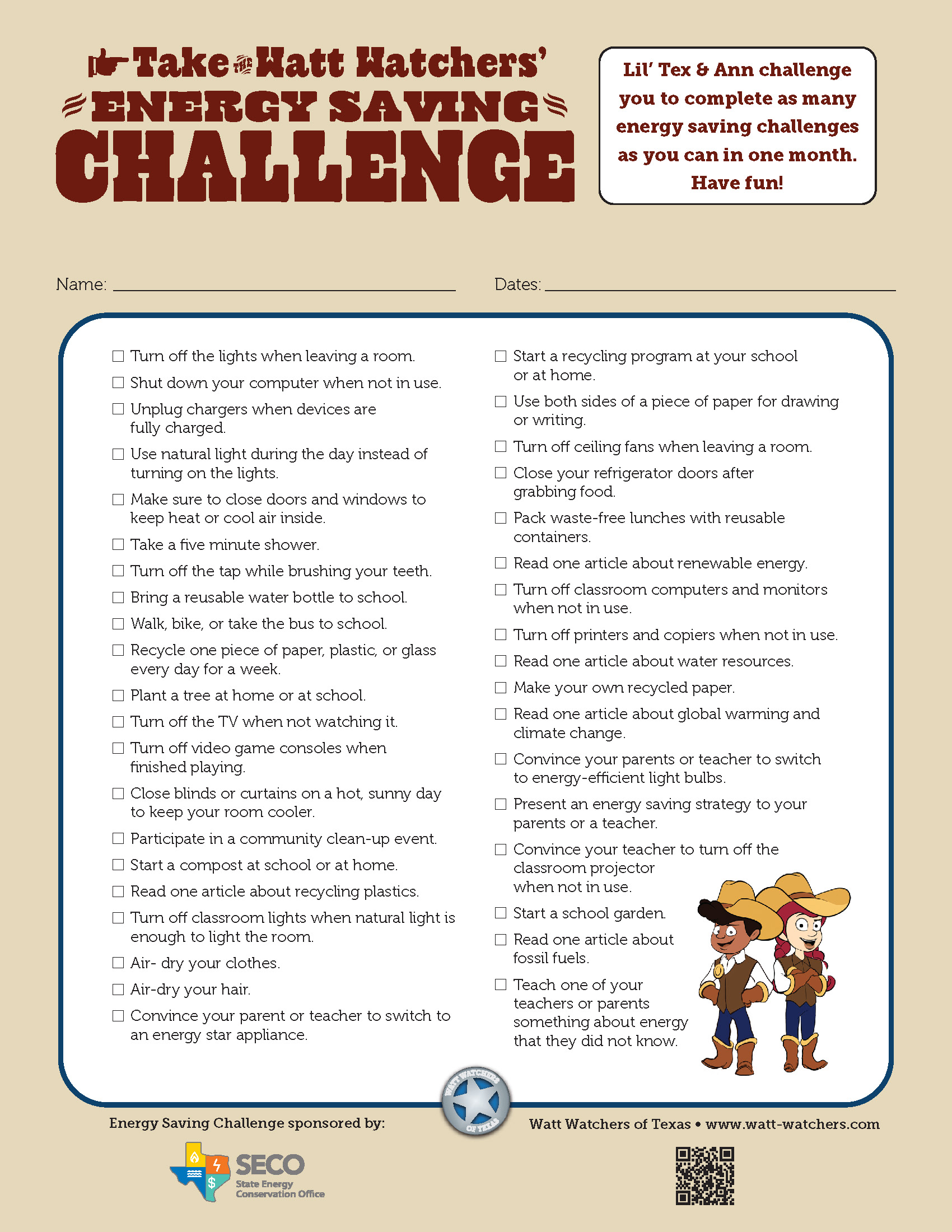
We'd love to help answer any questions and help you get started! Drop us a line and we'll get back to you as soon as we can.
Watt Watchers of Texas
204 E. Dean Keeton Street, Austin, Texas 78712
contact@watt-watchers.com
Nos encantaría contestarle cualquier pregunta que tenga y ayudarle empezar! Envíenos un mensaje y nos pondremos en contacto con usted lo antes posible.
Watt Watchers de Texas
204 E. Dean Keeton Street, Austin, Texas 78712
contact@watt-watchers.com